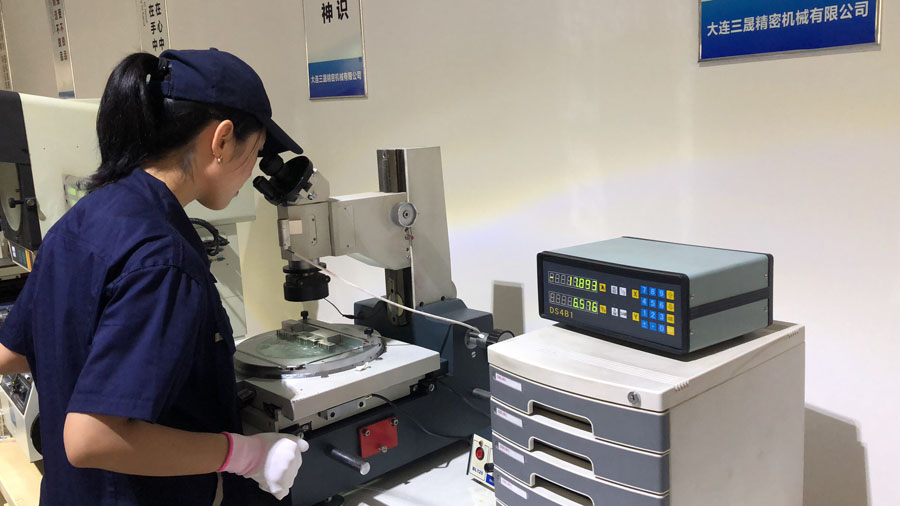Mechanical testing is not merely a procedural step but constitutes the foundational basis for ensuring that your product operates as intended and maintains safety under real-world conditions. Whether designing new components, optimizing existing products, or verifying material compliance with the highest standards, these tests yield critical insights into material behavior under stress, pressure, and diverse operational environments
Introduction
Mechanical testing plays a crucial role in ensuring the reliability and durability of machined components. Precision manufacturing demands high standards of quality control, and mechanical testing provides the necessary data to validate material properties, machining accuracy, and performance under different conditions.
Importance of Mechanical Testing in Machining
Mechanical testing plays a vital role in ensuring product quality, safety, and innovation. It verifies material reliability, prevents failures, and validates design choices. By ensuring compliance with industry standards like ASTM and ISO, it enhances market acceptance. Testing also supports R&D efforts, reduces costs by preventing unexpected failures, aids in failure analysis, and drives technological advancements by pushing material performance limits.
Key Mechanical Tests for Machined Parts
1. Hardness Testing
Hardness testing measures a material’s resistance to deformation. Common methods include:
Brinell Hardness Test (BHN): Used for soft metals and large components.
Rockwell Hardness Test (HRB, HRC): Applied to a variety of metals based on penetration depth.
Vickers and Knoop Hardness Tests: Suitable for micro-hardness analysis in thin or small parts.
2. Tensile Testing
Tensile testing evaluates a material’s strength and ductility by applying a uniaxial force until failure. It determines:
- Yield strength
- Ultimate tensile strength
- Elongation and reduction in area
3. Impact Testing
Impact tests assess a material’s toughness and resistance to sudden loads. Common methods include:
Charpy Test: Measures energy absorption at high strain rates.
Izod Test: Determines a material’s ability to withstand sudden impacts.
4. Fatigue Testing
Fatigue testing replicates cyclic loading conditions to determine a component’s lifespan. It helps predict failure points and optimize machining parameters for durability.
5. Residual Stress Analysis
Machining operations often induce residual stresses, affecting performance and structural integrity. X-ray diffraction and hole-drilling methods help assess these stresses, guiding process adjustments to improve stability.
Best Practices in Mechanical Testing
Standardized Procedures: Follow ASTM, ISO, or other relevant standards to ensure consistency.
Proper Sample Preparation: Maintain precise dimensions and surface finishes for accurate results.
Regular Equipment Calibration: Ensure testing machines provide reliable data.
Data Interpretation: Use advanced software for in-depth analysis and process optimization.

Advantages of Mechanical Testing in Machining
1. Ensures Material and Component Quality
Mechanical testing verifies that raw materials and finished machined components meet the required specifications. Tests such as tensile, hardness, and impact resistance evaluations help manufacturers confirm material consistency and mechanical properties, ensuring reliability in real-world applications.
2. Prevents Structural Failures
By identifying weaknesses in materials or machining processes, mechanical testing helps prevent catastrophic failures. Fatigue and stress testing allow engineers to assess how components will perform under repeated loads, reducing the risk of unexpected breakdowns.
3. Optimizes Machining Processes
Testing data provides insights that help refine machining processes. Understanding material behavior under different cutting conditions allows manufacturers to optimize tool selection, cutting speeds, and feed rates, ultimately improving efficiency and extending tool life.
4. Ensures Compliance with Industry Standards
Mechanical testing ensures that machined parts comply with regulatory standards such as ASTM, ISO, and SAE. Meeting these standards is critical for product certification and acceptance in industries such as aerospace, automotive, and medical device manufacturing.
5. Supports Research and Development
R&D teams rely on mechanical testing to explore new materials, coatings, and machining techniques. By analyzing test results, manufacturers can innovate and develop components with enhanced performance, increased wear resistance, and greater sustainability.
6. Reduces Costly Failures and Rework
Identifying defects early in the manufacturing process prevents costly product recalls and rework. By testing samples before full-scale production, manufacturers save resources, minimize waste, and improve overall profitability.
Limitations of Mechanical Testing in Machining
1. Time-Consuming Process
Some mechanical tests require significant time for setup, execution, and analysis. This can slow down production schedules, especially when extensive testing is needed to validate new materials or machining techniques.
2. Destructive Nature of Certain Tests
Many mechanical tests, such as tensile, impact, and fatigue testing, require specimen destruction. This means that tested samples cannot be used in final production, leading to material wastage and additional costs.
3. High Equipment and Operational Costs
Advanced mechanical testing methods require specialized equipment, trained personnel, and controlled testing environments. The cost of maintaining and calibrating testing machines can be a significant investment for small and medium-sized machining businesses.
4. Variability in Test Conditions
Real-world applications may involve conditions that differ from those simulated in controlled laboratory environments. Factors such as temperature fluctuations, load variations, and environmental influences may affect actual component performance, limiting the direct applicability of test results.
5. Limited Scope for Complex Assemblies
While mechanical testing is effective for individual components, it may not fully assess the performance of complex assemblies. Interactions between different materials and structural elements require additional testing methods, such as finite element analysis (FEA) and in-situ performance evaluations.
Conclusion
Mechanical testing is a vital aspect of machining, ensuring components meet quality and performance standards. By integrating rigorous testing protocols, manufacturers can enhance reliability, minimize failures, and optimize production efficiency. As machining technologies evolve, mechanical testing will continue to play a critical role in achieving superior part performance.
It enhances product reliability, prevents failures, and supports innovation. However, challenges such as cost, time requirements, and the destructive nature of certain tests must be carefully managed. By balancing these advantages and limitations, manufacturers can effectively integrate mechanical testing into their quality control and R&D strategies, ensuring precision and durability in machined components.



